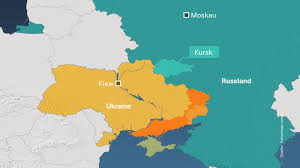Introduction
The comparison between Canada and Australia presents an intriguing exploration of two of the world’s most developed countries. Both nations are known for their high living standards, natural beauty, and multicultural societies. Understanding the differences and similarities in terms of culture, economy, education, and quality of life is essential for anyone interested in international relations, migration, or simply appreciating global diversity.
Cultural Landscape
Canada is characterized by its bilingual nature, primarily English and French, with a strong emphasis on multiculturalism that celebrates the coexistence of diverse cultures. Indigenous cultures also hold significant importance in Canadian identity. Australia, on the other hand, is known for its unique blend of British colonial heritage and rich Indigenous Aboriginal culture, and primarily speaks English. Both countries pride themselves on being welcoming to immigrants, which adds to their multicultural fabric.
Economic Factors
Economically, Canada has a robust mineral and natural resource sector, with significant oil sands in Alberta and mining operations across the country. In contrast, Australia’s economy is heavily reliant on exports of commodities like iron ore and coal, as well as agricultural products. The 2023 Global Competitiveness Report ranked Canada slightly higher than Australia in overall economic performance, but both countries maintain strong GDP growth and offer low unemployment rates.
Education Systems
In terms of education, both Canada and Australia boast high standards. Canada’s education system is publicly funded and managed at the provincial level, resulting in variations in quality and curriculum across the country. Australia, however, has a more standardized national curriculum that applies across states. Both countries have world-renowned universities and attract a large number of international students. The 2021 QS World University Rankings showed several Canadian and Australian institutions within the top 100 globally.
Environmental Considerations
Canada and Australia both face challenges related to environmental issues such as climate change and biodiversity loss. Canada has implemented significant conservation initiatives and policies aimed at reducing carbon emissions, particularly in response to the devastating impact of wildfires and melting ice caps. Australia is also working towards sustainability goals, especially in light of recent bushfires that highlighted vulnerabilities in its ecological management.
Conclusion
In conclusion, while Canada and Australia share several similarities as developed nations and multicultural societies, each possesses unique characteristics that define its identity. The relevance of examining these differences aids individuals in understanding global dynamics, whether for travel, education, or potential relocation. As both nations continue to evolve, it will be interesting to observe how their policies and cultural attitudes shift in the face of modern challenges.


